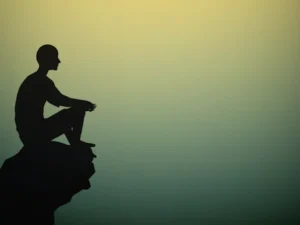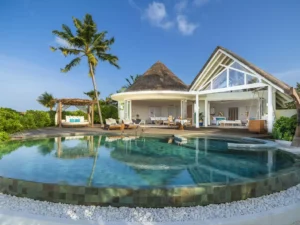Alexander Solzhenitsyn described China’s rule in Tibet as “more brutal and inhuman than any other communist regime in the world.” It’s now close to 65 years since HH. The Dalai Lama was forced to flee his homeland at 24.
Tenzin Gyatso (born July 6, 1935) is the fourteenth Dalai Lama. The fifth of 16 children of a farming family in the Tibetan province of Amdo, he was proclaimed the tulku (rebirth) of the thirteenth Dalai Lama at the age of two. On November 17, 1950, at the age of 15, he was enthroned as Tibet’s Head of State and most influential political ruler, while Tibet faced occupation by the forces of communist China. After the collapse of the Tibetan resistance movement in 1959, Tenzin Gyatso fled to India with close to 100.000 followers as the Chinese had put a price on his head. The story from then till now has been that of struggle and resilience for the Tibetans in Tibet.

from the state of Himachal Pradesh (India) as a tribute to the place that welcomed them in exile
since 1959 when they fled the Chinese invasion of Tibe
Prime Minister Jawaharlal Nehru urged China to let Tibet be free. He believed that the hold would not last long. In 1960, however, seeing this didn’t change, official asylum was granted. What followed were peace and persuasion talks. Dalai Lama planned the struggle in exile, governing from a monastery. Eventually, Mcleod Gang in Dharamsala, a former XIXth century British hill station in Himachal Pradesh, was chosen as the home for His Holiness. India opened its heart to the Dalai Lama and to the Tibetan exiles. Between 1959 and 1960, over 800.000 Tibetans fled the terrible Chinese oppression. They made their homes mainly in India, Nepal and Bhutan. The destruction of Tibet’s culture and oppression of its people was brutal during the twenty years following the uprising. 1.2 million Tibetans, one-fifth of the country’s population, died because of China’s policies; many more languished in prisons and labour camps; and more than 6000 monasteries, temples and other cultural and historic buildings were destroyed, and their contents pillaged.

Over the years, numerous state governments in India have provided land and other facilities for settlement camps. There are 39 formal settlements for the Tibetans and dozens of informal communities across India where they live. The state governments have aided in the construction of schools, monasteries, and other cultural institutions, leading to the preservation of the Tibetan way of life. Undoubtedly, support and aid from India have sustained the Tibetan identity and culture under much duress in its homeland. India’s hospitality to the Tibetans has led to the survival of a unique civilisation that used to thrive in the Tibetan plateau.

The Indian support has increased the resiliency of the Tibetan refugee population, which has led to the survival of the Tibetan way of life. On the other hand, for India, the presence of Tibetans is beneficial, especially in the long run, as the festering territorial disputes in the Himalayas with China are tied to Tibet and Tibetans. The presence of the Dalai Lama, along with the other Tibetan Buddhist hierarchs in India, provides New Delhi with an advantage to gain legitimacy over the predominantly Tibetan Buddhist communities in the Himalayas.

McLeodganj is a special place. It can be felt while you’re there. The home of the Tibetan government in exile is known as Little Lhasa, and it attracts a torrent of travellers who come. It has a spectacular setting, close to the perennial snowline and built along a spur of the Dhauladhar mountain range. The town preserves Tibet’s religious and cultural heritage, keeping the Tibetan cause alive internationally and serving as the focal point for the 100,000 Tibetans scattered in refugee settlements all over India. Many Tibetans have made McLeodganj their home; therefore, the town has a strong Tibetan influence; crimson-robed monks on their way to the monasteries are a common sight.

His Holiness teaches at his temple, which is open to the public, and visitors can often see him. Yet, even when absent, his presence is still felt throughout the town. Restaurants, hotels, and cafes typically hang framed photos of the Dalai Lama laughing or sipping tea. Stores install small shrines to him, and street vendors sell all sorts of accoutrements, from prayer beads to singing bowls to incense holders.

A charismatic figure and noted public speaker, Tenzin Gyatso was the first Dalai Lama to travel to the Western world, where he helped spread Buddhism and publicise the ideal of Free Tibet. He has been an outspoken advocate of peace and tolerance and improved relations between the world’s religions. In his writing and speaking, he has drawn on the broader Buddhist tradition, not only on Tibetan Buddhism. In 1989, he was awarded the Nobel Peace Prize “for advocating peaceful solutions based upon tolerance and mutual respect to preserve the historical and cultural heritage of his people.” He is among the most widely known, easily recognised and respected religious leaders worldwide. Throughout his life, he has tried to bridge barriers. He has consciously communicated Eastern values and Tibetan culture within the Western context.

Chinese occupation and various policies designed to assimilate or signify Tibetans and to destroy their separate national, cultural, and religious identity, the Tibetan people’s determination to preserve their heritage and regain their freedom is as strong as ever. The situation has led to confrontation inside Tibet and large-scale Chinese propaganda efforts internationally. Every year on March 10, Tibetans around the world celebrate the anniversary of the failed Tibetan Uprising against Chinese oppression. Still, it is in Dharamsala where it is most memorable. The Dalai Lama publishes a manifesto to his people, there is a religious ceremony at the main temple and political rallies all over time that express the Tibetan resilience after over 6 decades of exile.

The Tibetans are indebted to India, and His Holiness, the Dalai Lama, has repeatedly expressed his gratitude to India for providing the Tibetans with a space to sustain themselves. The Dalai Lama often terms himself a “son of India.” In 2019, the exiled Tibetans commemorated the ‘Thank You India’ year to express their utmost gratitude for 60 years of warm welcome.

The Dalai Lama said to CNN that he was grateful for the care and support he had received from India: “I think in this country (there are) many other refugees, but we are, I think, the most fortunate and successful refugee community because of the government of India’s care and support.”
The Chinese communist government is responsible for committing crimes against humanity. A real genocide, and it is my wish that those responsible will one day be brought to justice. In the meantime, life continues for the Tibetan diaspora and those who are still in Tibet and suffer daily the cruelty of their invaders.
©Photographs by Angel Lopez-Soto











